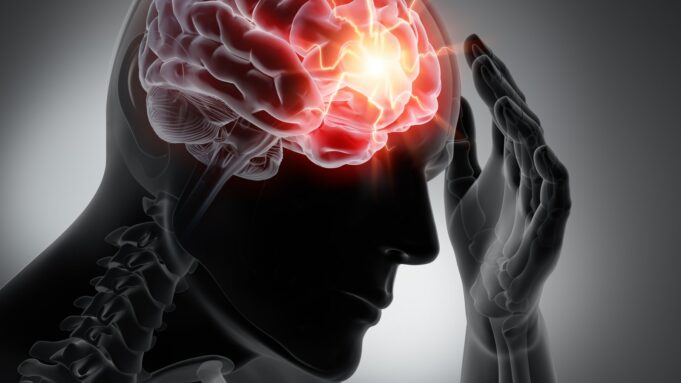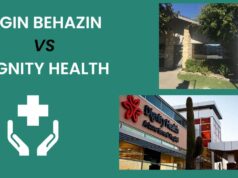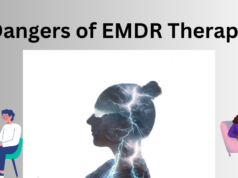Traumatic brain injury (TBI) is a devastating condition characterized by physical, cognitive, and emotional impairments resulting from a sudden blow or jolt to the head.
The limited regenerative capacity of the brain poses significant challenges for successful recovery in TBI patients.
However, emerging research has shed light on the potential of hyperbaric oxygen therapy (HBOT) as a promising treatment modality. The best way to understand is by knowing about it from the experts themselves. Visit Oxygenark HBOT to seek guidance and appointment.
HBOT involves the administration of 100% oxygen in a pressurized chamber, creating a unique environment that can induce angiogenesis (the formation of new blood vessels) and promote the regeneration of nerve fibers in the injured brain.
This article explores the fascinating therapeutic effects of HBOT in stimulating angiogenesis and facilitating nerve fiber regeneration, offering new hope for individuals suffering from traumatic brain injuries.
The Role Of HBOT In Angiogenesis And Regeneration Of Nerve Fibers
Traumatic brain injury (TBI) is a complex condition, often leading to significant functional impairments and long-term disabilities.
The limited regenerative capacity of the central nervous system presents a challenge for successful recovery in TBI patients.
However, hyperbaric oxygen therapy holds promise in inducing angiogenesis and promoting the regeneration of nerve fibers in the injured brain.
Understanding Traumatic Brain Injury and Angiogenesis
Traumatic brain injury occurs when an external force, such as a blow to the head or a violent jolt, disrupts the brain’s normal functioning.
The initial impact leads to primary injury, which includes contusions, lacerations, and diffuse axonal injury.
However, the subsequent secondary injury cascade, including inflammation, oxidative stress, and impaired blood flow, exacerbates tissue damage and functional deficits.
The brain’s regenerative capacity is limited, and strategies to promote healing and functional recovery are crucial in TBI management.
What is Angiogenesis?
Angiogenesis is the physiological process through which new blood vessels are formed from existing ones. It plays a crucial role in various normal physiological processes, like embryonic development, wound healing, and the menstrual cycle.
In context to traumatic brain injury, this is what helps you recover from the damage you have sustained. However, it might not be too efficient in some cases.
The Role Of Angiogenesis In TBI
Traumatic brain injury (TBI) causes damage to the brain tissue and disrupts the blood vessels that supply oxygen and nutrients. This leads to further harm and slows down the healing process.
However, the body has the ability to create new blood vessels, a process known as angiogenesis, in response to injury. Angiogenesis is crucial for repairing damaged tissue by providing oxygen, nutrients, and growth factors.
In TBI, angiogenesis is essential for restoring blood flow to the injured areas and supporting the healing process. New blood vessels grow into the damaged region, promoting the reconnection and nourishment of vital structures.
The regulation of angiogenesis in TBI involves various signaling molecules, including growth factors like vascular endothelial growth factor (VEGF), which stimulate the growth and movement of blood vessel cells, forming new capillaries and improving blood circulation.
Understanding the role of angiogenesis in TBI opens up new possibilities for therapeutic interventions. One such approach is hyperbaric oxygen therapy (HBOT), which has shown promise in enhancing angiogenesis and facilitating healing in patients with TBI.
HBOT And Angiogenesis
Hyperbaric oxygen therapy (HBOT) is a promising treatment that can help stimulate the formation of new blood vessels in various medical conditions.
Angiogenesis which is the process of creating new blood vessels, is important for healing and recovering from injuries and diseases.
HBOT involves breathing pure oxygen in a pressurized chamber, which increases the amount of oxygen in the body. This higher oxygen level triggers mechanisms that promote angiogenesis.
One important factor involved is hypoxia-inducible factor 1-alpha (HIF-1α), which becomes more active in the oxygen-rich environment created by HBOT.
HIF-1α activates genes that support angiogenesis. HBOT also boosts the release of growth factors like vascular endothelial growth factor (VEGF), which encourages the growth of new blood vessels.
Overall, HBOT helps create an oxygen-rich environment that stimulates angiogenesis and enhances healing.
Regeneration Of Nerve Fibers
After a traumatic brain injury (TBI), the regeneration of nerve fibers called axonal regeneration, is crucial for recovering brain function.
When the brain is injured, the nerve fibers can be damaged, causing problems with how the brain communicates.
However, research shows that hyperbaric oxygen therapy (HBOT) can greatly help regenerate these nerve fibers and promote neurological recovery.
HBOT works by increasing the availability of oxygen to the injured brain tissue. When patients undergo HBOT, they breathe pure oxygen in a pressurized chamber, increasing oxygen levels in their bloodstream and brain.
Oxygen is essential for cell repair and regeneration, and having more of it supports the growth of new neurons and the formation of new nerve cells.
HBOT creates an environment that promotes nerve fibers’ regeneration, and repairs damaged neural connections by delivering extra oxygen to the injured brain.
Can HBOT Treat Patients With Cerebral Stroke Trauma and Neurologic Diseases?
Neurologic diseases encompass a broad range of conditions affecting the central nervous system, such as multiple sclerosis, Parkinson’s disease, and traumatic brain injury. The use of HBOT in these conditions is also a subject of ongoing investigation.
However, logically speaking, HBOT can, indeed, be helpful in several aspects, including –
- HBOT increases the amount of oxygen dissolved in the blood, which can enhance oxygen delivery to the brain and other affected tissues. This helps to mitigate the effects of reduced blood flow or oxygen deprivation.
- It also has anti-inflammatory effects, which can be beneficial for patients with cerebral stroke, trauma, or neurologic diseases. It can help to suppress inflammatory responses and limit tissue damage caused by swelling or oxidative stress.
- The said treatment promotes the formation of new blood vessels (neovascularization) and the growth of existing blood vessels (angiogenesis). This can improve blood supply to damaged or ischemic areas, aiding in tissue repair and recovery.
- HBOT can help reduce cerebral edema (swelling) by enhancing oxygen availability and enhancing circulation. It will also relieve pressure on the brain and potentially prevent further damage.
Our Thoughts!
Traumatic brain injury presents significant challenges in tissue repair and functional recovery. However, the emerging role of hyperbaric oxygen therapy in promoting angiogenesis and facilitating the regeneration of nerve fibers offers hope for TBI patients.
By enhancing oxygen supply, stimulating angiogenesis, and supporting neuro-regenerative processes, HBOT holds promise as a valuable therapeutic approach for improving outcomes in TBI management.
Continued research efforts and collaborative studies are essential to elucidate further the mechanisms underlying HBOT’s effects and refine its application, ultimately benefiting individuals affected by traumatic brain injury.


















